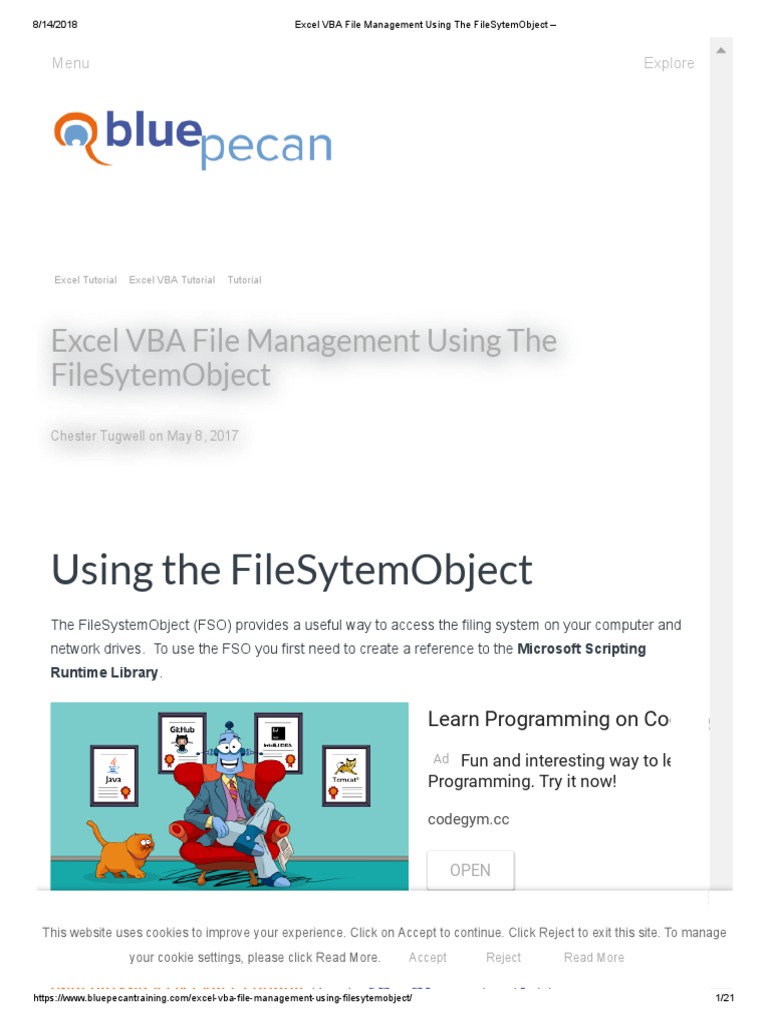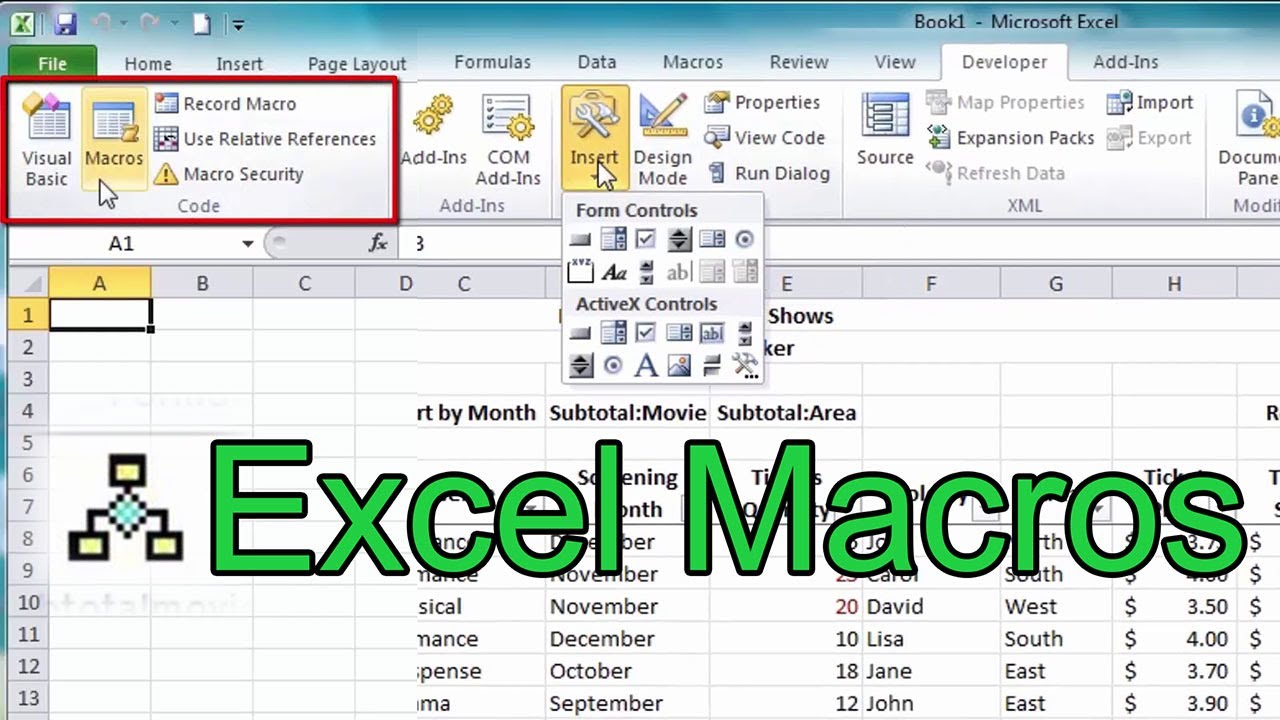10 Quick Tips for Excel VBA File Management

Efficient file management is crucial when working with Microsoft Excel and Visual Basic for Applications (VBA). Whether you're automating tasks, manipulating data, or creating complex macros, proper file organization and management can greatly enhance productivity and streamline your workflow. In this article, we will explore ten quick tips to help you master Excel VBA file management, offering a range of practical techniques to optimize your experience.
1. Create a Structured Folder System

Establishing a well-organized folder structure is essential for managing your VBA projects. Create dedicated folders for different aspects of your work, such as macros, data files, output reports, and backup copies. This ensures easy access and enables quick retrieval of specific files. For instance, consider using subfolders within a main VBA Projects folder, named based on project names or dates.
Example Folder Structure
A possible structure could look like this:
- VBA Projects
- 2023-01-01_ProjectA
- 2023-02-15_ProjectB
- Utilities
2. Utilize Excel’s Built-in Macro Recorder

Excel’s macro recorder is a powerful tool for beginners to understand VBA concepts. While it may not produce perfectly optimized code, it provides a great starting point. By recording your actions, you can quickly generate basic VBA code, which you can then modify and expand upon to suit your needs.
How to Record a Macro
- Open Excel and go to the View tab.
- Click on Macros > Record Macro.
- Name your macro and choose where to store it (e.g., in the current workbook or a new workbook).
- Perform the actions you want to automate.
- Stop the recording when finished.
3. Save Workbooks as VBA Project Files (*.xlsm)
When working with VBA, it’s best to save your Excel workbooks as .xlsm files. This file type supports macros and allows you to access and edit your VBA code easily. Saving in this format ensures your macros and data are stored together, making it convenient for collaboration and sharing.
Saving as a VBA Project File
- Open your Excel workbook.
- Go to the File tab and select Save As.
- Choose Excel Macro-Enabled Workbook (*.xlsm) from the Save as type dropdown.
- Select a location and provide a filename.
- Click Save to create the .xlsm file.
4. Organize and Comment Your VBA Code
Well-organized and commented code is crucial for maintaining and troubleshooting your VBA projects. Use meaningful variable names and comments to explain your code’s logic and purpose. This makes it easier for others (and your future self) to understand and modify the code.
Commenting VBA Code
You can add comments to your VBA code using the ‘ symbol. Any text following this symbol on a line is treated as a comment and ignored by the VBA interpreter.
’ This is a single-line comment.
Sub MyMacro()
‘ Multiline comments can also be used to explain complex sections of code.
’ It helps to provide a brief explanation of the purpose and functionality.
End Sub
5. Use Consistent Naming Conventions

Consistency in naming conventions is vital for maintaining a clean and understandable codebase. Adopt a uniform naming style for variables, procedures, and modules. This makes it easier to locate and modify specific elements of your code, especially when working on larger projects.
Naming Conventions Best Practices
- Use camelCase for variable names (e.g.,
totalAmount). - Opt for PascalCase for procedures and functions (e.g.,
CalculateTotal). - Consider adding prefixes to module names to indicate their purpose (e.g.,
modDatafor a data manipulation module).
6. Regularly Back Up Your Work
Accidents happen, and data loss can be devastating. Regularly backing up your VBA projects is essential to prevent potential disasters. Consider using cloud storage services or external hard drives to ensure your work is safe and accessible from multiple devices.
Backup Strategies
- Set up automated backups using tools like Windows Backup or Time Machine on macOS.
- Utilize cloud storage services like Google Drive, OneDrive, or Dropbox for real-time syncing and off-site storage.
- Implement a versioning system to keep track of changes and allow easy rollbacks.
7. Manage Workbook References Effectively
Excel VBA allows you to reference external workbooks and use their data or procedures. However, managing these references efficiently is crucial to avoid errors and maintain a smooth workflow.
Best Practices for Workbook References
- Use absolute paths when referring to external workbooks to ensure they remain accurate even when moving files.
- Avoid hardcoding paths in your code; instead, use variables or constants to make updates easier.
- Periodically check and update references to ensure they point to the correct locations.
8. Leverage the VBA Editor’s Features
The VBA Editor, accessible via the Developer tab in Excel, offers a range of tools to enhance your coding experience. Familiarize yourself with its features, such as the Immediate Window, Watch Window, and Project Explorer, to debug and organize your code more efficiently.
VBA Editor Tools
- Immediate Window: Allows you to execute VBA statements directly, making it useful for quick tests and debugging.
- Watch Window: Lets you monitor the values of variables during code execution, aiding in debugging complex procedures.
- Project Explorer: Provides an overview of all your project’s components, making it easy to navigate and organize your code.
9. Optimize File Sizes
Large VBA projects can result in bulky Excel files, impacting performance and file transfer speeds. Optimizing your file sizes is essential to maintain efficiency.
Tips for File Size Optimization
- Remove unused code and variables regularly to reduce file size.
- Consider using compression techniques or external libraries to handle large datasets efficiently.
- Implement modular coding practices to avoid code duplication and keep files lean.
10. Regularly Review and Update Your Code
Regular code reviews are crucial to ensure your VBA projects remain efficient and error-free. As you gain more experience, you may find better ways to accomplish tasks. Updating your code with these improvements ensures it stays optimized and reflects your growing expertise.
Code Review Tips
- Review your code periodically, especially after major changes or additions.
- Seek feedback from peers or online VBA communities to gain new perspectives.
- Consider using code analysis tools to identify potential issues and optimize your VBA scripts.
What are some common VBA errors I should be aware of when managing files?
+Common VBA file management errors include path errors when referring to external files, reference errors when working with libraries, and macro security issues when attempting to run macros in protected workbooks. It’s essential to handle these errors gracefully in your code to ensure smooth execution.
How can I automate the backup process for my VBA projects?
+You can use Windows’ built-in Task Scheduler to automate backups. Create a task that runs a batch file or a script to copy your VBA project files to a designated backup location at regular intervals. This ensures your work is backed up without manual intervention.
What’s the best way to handle large datasets in VBA without impacting performance?
+To manage large datasets efficiently, consider using external libraries like ADODB for database connectivity or XLConnect for reading and writing Excel files directly from R. These libraries can handle large amounts of data more effectively than standard VBA methods.



